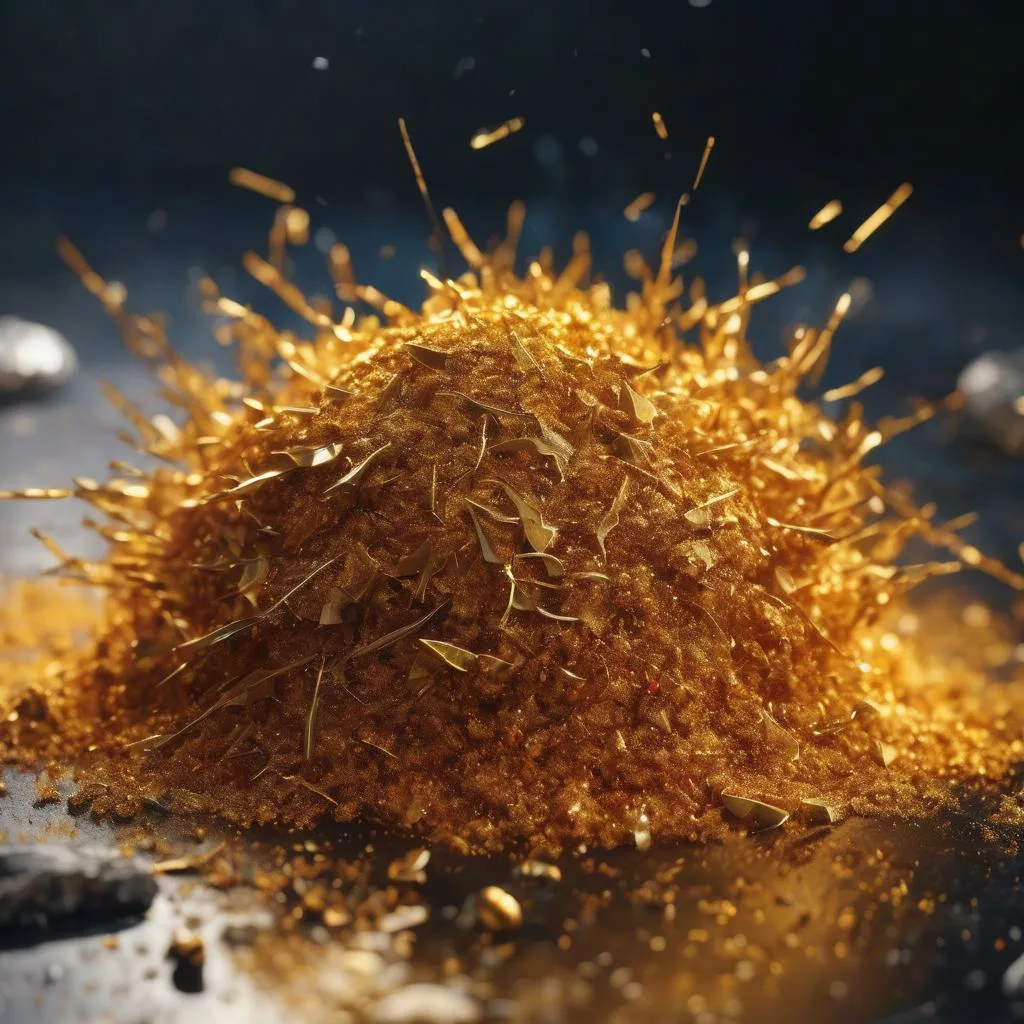Turmeric root is a plant that belongs to the ginger family and has been used for centuries as a spice, a dye, and for medicinal purposes. The plant is native to Southeast Asia, but is now widely grown in different parts of the world. In this article, we will explore the different types of turmeric, their origins, where they are cultivated, and their uses.
What is turmeric, and what are its benefits?
Turmeric is a spice that has been used for its medicinal properties for thousands of years. It has curcumin in it, which is a chemical with anti-inflammatory and antioxidant properties that can help treat a number of health problems. Turmeric can help reduce inflammation, improve brain function, lower the risk of heart disease, and even stop cancer from happening.
This super food (Alexandra et al., 2016) can also be used for skincare. It may help reduce acne and a range of other skin conditions, including whitening the skin. There are a number of studies that have linked turmeric to health benefits for animals as well. Turmeric is considered a balancing agent to achieve balance among the three doshas pitta (fire), vata (air), and kapha (water) in Ayurvedic medicine.
What are the best conditions for growing turmeric?
Turmeric requires a warm and humid climate with temperatures between 20-30 °C and annual rainfall of 1500-2000 mm. The soil should be well-draining and rich in organic matter. The plant thrives in partial shade, requires regular watering, and takes between 200 and 300 days to mature.
Ideally, the soil pH should be between 4.5 and 7.5. Turmeric has a large appetite for nutrients and needs fertilization with the slow release of granular fertilizers. You should avoid planting plants such as eggplant, tomatoes, and peppers that have a heavy requirement for nutrients in areas where turmeric root has been planted.
Top turmeric growing areas in the USA
The United States is not a major producer of turmeric, but it is grown in some states such as Hawaii, Florida, and California. In Hawaii, the island of Kauai is the main producer of turmeric. In Florida, the town of Dade City is known for its turmeric production, while in California, turmeric is grown in the San Joaquin Valley.
The Origin Of Turmeric
Turmeric is thought to have come from India, where it has been used as a spice and medicine for thousands of years. It is also used for traditional rituals, such as wedding ceremonies. In the seventh century, it was introduced to China, after which it spread to East Africa and the Middle East. When Arab traders first introduced it to Europe in the 13th century, it was known as Indian saffron. During the 18th century, when the spice gained popularity in Europe, Curcuma longa was given to it as its scientific name.
Types of turmeric by geographical location in the world
There are different types of turmeric, and they vary in their color, aroma, and taste. Turmeric can be categorized based on the geographical location where it is grown. Below are just a few countries where turmeric is used for different purposes.
Indian Turmeric:
- Alleppey Finger (Kerala)
- Erode Turmeric (Tamil Nadu)
- Nizamabad Bulb (Andhra Pradesh)
- Rajapore (Maharashtra)
- Sangli Turmeric (Maharashtra)
- Salem Turmeric (Tamil Nadu)
Indonesian Turmeric:
- Jember Turmeric (East Java)
- Ngawi Turmeric (East Java)
- Tasikmalaya Turmeric (West Java)
- Wonosobo Turmeric (Central Java)
African Turmeric:
- Zanzibar Turmeric
- Nigeria Turmeric
- Uganda Turmeric
- Ethiopia Turmeric
- Morocco Turmeric
South American Turmeric:
- Curcuma amazonia (Peru)
- Curcuma xanthorrhiza (Indonesia)
North American Turmeric:
- Oconee Turmeric (Georgia)
- Hawaiian Turmeric
European Turmeric:
- Spanish Turmeric (Teruel)
- Italian Turmeric
Now that we’ve talked about the different kinds of turmeric from around the world, let’s talk about how to grow and store this useful spice.
Harvesting Turmeric
Turmeric is ready for harvesting once the leaves and stems of the plant turn yellow and begin to dry out. This usually occurs around 7–10 months after planting, and at this time the plant has a depth of between 5–10 cm. Harvesting can easily be done by pulling the entire plant out of the ground or by carefully digging up the rhizomes.
During harvest, the rhizomes need to be handled carefully so that they don’t get damaged and lose some of their quality. The rhizomes should also be thoroughly washed to get rid of any dirt or debris after har
Storing Turmeric
It is important to store turmeric correctly if you want it to last and stay good. Fresh, unpeeled turmeric should be stored in a cool, dry place with good ventilation, away from direct sunlight. You can use a plastic bag and store it in the refrigerator for several weeks. The ideal temperature for storing turmeric is between 50-68°F.You can also choose to freeze the rhizome.
If you’re storing turmeric for an extended period, it’s best to dry the rhizomes first. To do this, you can slice the rhizomes into small pieces of between 1 and 1.5 inches and leave them out in the sun to dry for a few days. Alternatively, you can use a food dehydrator (set at 140 °F or 60 °C) or oven to dry them. Once dried, store the turmeric in an airtight container in a cool, dark place.
Myths About Turmeric
Turmeric is known as a super food, and with that comes a lot of myths about what it can do for you. Let’s debunk some common myths about turmeric:
Myth #1: Turmeric can cure all diseases.
While turmeric has many health benefits, it’s important to remember that it’s not a miracle cure. Although some studies have shown that turmeric can aid in reducing inflammation and boosting the immune system, it’s not a substitute for medical treatment. Indeed, turmeric has not been approved as a medicine.
Myth #2: Turmeric is 100% safe and has no side effects.
Turmeric is usually safe to eat, but too much of it can make you sick, especially if you are on medication. Turmeric can also cause gastrointestinal issues such as stomach upset and diarrhea in some people. You are advised to seek medical advice before using turmeric products.
Myth #3: Turmeric is effective in treating cancer.
While some studies have shown that turmeric can help prevent cancer, it’s not a cure for the disease. Always do your research before purchasing any products or treatments that claim to cure cancer, as many of these claims are not scientifically proven. It’s important to prioritize your health and well-being and make informed decisions about your treatment options.
Myth #4: All turmeric supplements are the same.
Not all turmeric supplements are created equal. The composition may vary depending on the outcome that manufacturers are targeting. It’s important to read the labels and make sure that the supplement is designed to solve your problem. An independent, reputable company should also verify the supplements’ ingredients.
Myth #5: Turmeric should be taken every day.
Our bodies require different foods and nutrients, which come in a wide range of foods and herbs. Therefore, there are times when you will not need turmeric but need something else. It is important to learn about more foods and how they work in your body.
Top Turmeric Processing Companies
There are several companies that specialize in processing turmeric all over the world . These companies are responsible for cleaning, grading, and processing turmeric into various forms, such as powder, paste, and essential oil. Here are some top turmeric processing companies to look out for .
Conclusion
Turmeric is a very useful spice that has been used in cooking, religious festivals and traditional medicine for hundreds of years. From its various types and origins to best practices for harvesting and storing, this article has covered everything you need to know about turmeric. Remember to only buy high-quality turmeric from trusted sources and to use this wonderful spice in small amounts. If you have any questions or comments about turmeric, we would love to hear from you in the comments section below.
Read about the best fat burning juice recipe
Thank you for reading.



